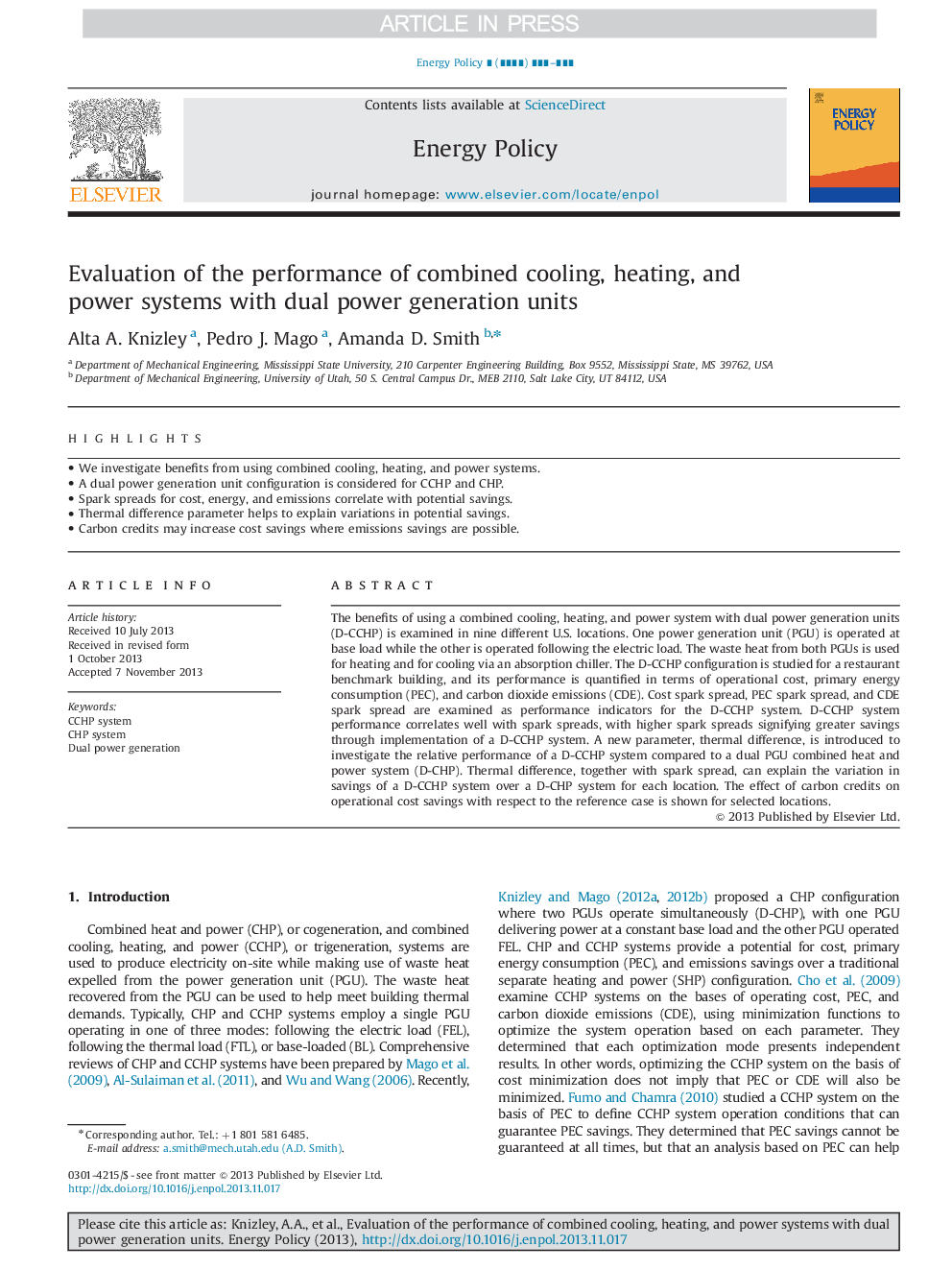| Article ID | Journal | Published Year | Pages | File Type |
|---|---|---|---|---|
| 7403323 | Energy Policy | 2014 | 12 Pages |
Abstract
The benefits of using a combined cooling, heating, and power system with dual power generation units (D-CCHP) is examined in nine different U.S. locations. One power generation unit (PGU) is operated at base load while the other is operated following the electric load. The waste heat from both PGUs is used for heating and for cooling via an absorption chiller. The D-CCHP configuration is studied for a restaurant benchmark building, and its performance is quantified in terms of operational cost, primary energy consumption (PEC), and carbon dioxide emissions (CDE). Cost spark spread, PEC spark spread, and CDE spark spread are examined as performance indicators for the D-CCHP system. D-CCHP system performance correlates well with spark spreads, with higher spark spreads signifying greater savings through implementation of a D-CCHP system. A new parameter, thermal difference, is introduced to investigate the relative performance of a D-CCHP system compared to a dual PGU combined heat and power system (D-CHP). Thermal difference, together with spark spread, can explain the variation in savings of a D-CCHP system over a D-CHP system for each location. The effect of carbon credits on operational cost savings with respect to the reference case is shown for selected locations.
Keywords
Related Topics
Physical Sciences and Engineering
Energy
Energy Engineering and Power Technology
Authors
Alta A. Knizley, Pedro J. Mago, Amanda D. Smith,
